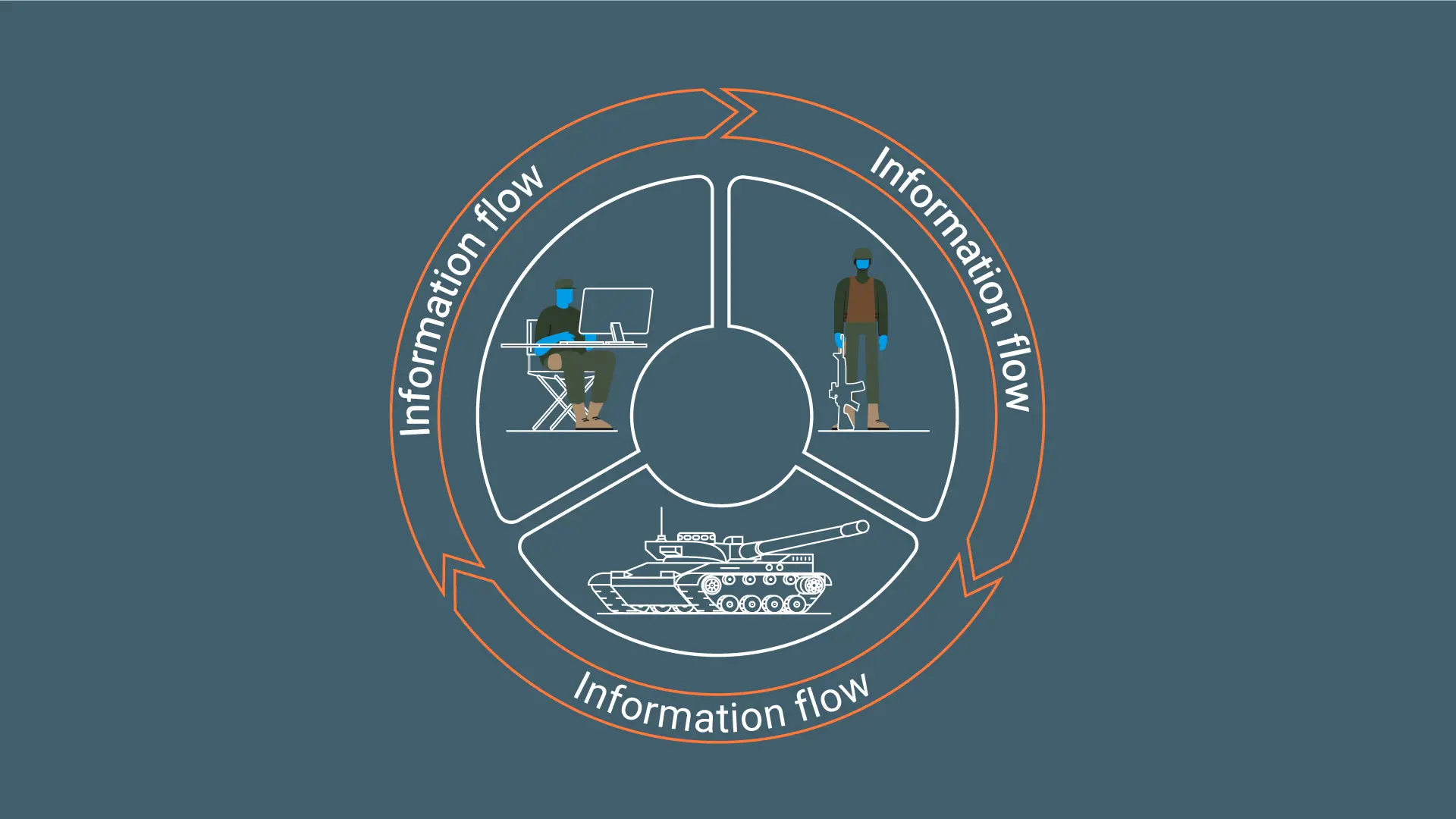Fighting as an organism (not an organisation)
Written by Dr Peter Roberts for the Wavell Room and reproduced with his kind permission. View the original post here.
There are issues in defining command and control: the doctrinal taxonomy isn’t really that much help. The authority, responsibility, and accountability to give orders (to a military unit) might be the common elements used for command across Western nations. The lived experience is somewhat different, less about entitlements and legal permissions (and restraints) and more about a how a commander executes military activity.
Likewise control – in NATO speak – runs along the lines of, “The authority exercised by a commander over part of the activities of subordinate organisations, or other organisations not normally under his command, that encompasses the responsibility for implementing orders or directives.” A sentence that feels utterly divorced from the reality of control measures used on a battlefield or in contact. Control really means the measures, processes and tools with which military tools and capabilities can be organised and orchestrated.
In reality these are very different functions: it is peculiar that we have somehow clumped them together and conjoined them as a unified acronym as if they were natural bedfellows. Stranger still has been the tendency to add yet more functions to them – like computers (does anyone still talk about computers anymore?).
One might argue that intelligence and surveillance were natural parts of command as we understand the term in normal usage, but to blend them (as in C5ISTAR) seems unnatural particularly when we do not do the same for the fighting teeth, support elements, or supply chain – all of which have an equally important influence over command decisions.
Orchestration of battle
It is perhaps somewhat more helpful to think of command and control in terms of the orchestration of battle (as per Viscount Slim), not only encompassing authority, responsibility, and accountability, but also acknowledging the reality of command functionality and philosophy.

Dr Jack Watling uses the metaphor of music to explain C2, stating that when people talk of orchestration (of battles) they imagine a classical music conductor who is able to compose, interpret, and execute the carefully laid out music after rigorous rehearsal and practice.
This description is apt for imagining the control of military forces in the era of the Cold War and perhaps even the 1991 Gulf War.
Here, adherence to a beautifully planned and choreographed Air Tasking Order set the pace of battle: everyone had their pieces laid out clearly in advance and was well practiced.
Rigid or flexible?
Modern C2 – when done well – can be more akin to jazz music where players are improvising and the leader focuses their attention at specific points to dictate tempo or to call on a particular instrument to take the lead (with other supporting it). Here, the conductor is also exercising control but in a far looser construct – built around an implicit trust in the players, their training and expertise. This is what commanders in Ukraine are striving for in their continued battles against the Russian invaders.
Beyond that moment, the potential for C2 becomes more like freestyle street music or contemporary dance. And then there is the dream state or aspirational end-state of C2 systems that might allow formations to operate as an organism rather than an organisation: task organising for missions and events on an ad hoc, real-time, dynamic basis; able to react and morph through different formats, groupings and shapes depending on the context, the adversary, and the opportunities.
Beyond official command
Here lies the nirvana for C2, orchestration and military units. The ability to operate almost without an established commander but able to move as a fluid structure – supporting where the effort looks to deliver greatest impact or results. One moment a unit could be part of the supporting effort – a distraction or deception, but the next moment an opportunity offers that same unit an opening with the potential to break an adversary. Without a formal orders process, other units see the opportunity and begin to support – offering capabilities and maximising the exploitable seam.
At this point C2 would cease to be the deliberate capability that absorbs so much staff effort, information and resource, and might start to become truly productive in and of itself. There is a long road to travel to get there however, and we might have come a long way already but that has not been an easy journey.
The growth of C2 systems
The western style of command and control has evolved since the established formats of the 1980s. Since then, C2 has become somewhat of an industry – and the size and scale of HQs has increased markedly. Along with that change, so too has the ability to conduct dynamic control of the battlespace. On a very basic level in Afghanistan, the usual fire co-ordination deconfliction lines were managed in real time enabling a pace of strike operations previously no possible.

This might appear to be some way distant, perhaps even beyond the fantasy world of techno fictionalists. Yet there are tools and systems that are approaching maturity to deliver something along these lines. What is missing is the human trust in those systems (and each other) that would make this possible. It also would require a considerable rethink of our definitions, including where the responsibility, accountability, and authorities lie.








